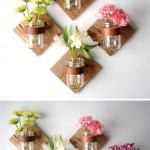Japanese Dining Table Decor: A Guide to Creating a Harmonious Space
Japanese dining table decor is more than simply arranging objects on a surface; it's an art form rooted in principles of harmony, balance, and simplicity. The Japanese aesthetic, known as "wabi-sabi," celebrates the beauty found in imperfection and the passage of time, and this philosophy extends to the way they approach dining. This article delves into the key elements of Japanese dining table decor, providing insights into creating a space that embodies tranquility and evokes a sense of peace during meals.
The Art of Minimalism
Japanese dining table decor prioritizes minimalism. It's about creating a clean, uncluttered space where food takes center stage. Instead of overwhelming the table with numerous decorative items, focus on a few carefully selected pieces that complement the meal. This approach allows for a sense of calm and focus on the shared experience of enjoying food together.
The emphasis on minimalism is not merely about aesthetics; it's also about respecting the food and the act of eating. In traditional Japanese culture, meals are often seen as rituals, and the simplicity of the table setting reflects this reverence. With less clutter, the focus naturally shifts to the flavors, textures, and colors of the food itself.
Natural Elements and Textures
Japanese dining table decor frequently incorporates natural elements, reflecting the deep appreciation for nature within Japanese culture. This can be seen in the use of materials like wood, bamboo, and stone, which bring a sense of grounding and tranquility to the table setting. For example, a simple wooden tray or a bamboo placemat can add a touch of warmth and authenticity. The use of natural textures also creates a tactile experience, inviting guests to engage with their senses during the meal.
Beyond materials, the incorporation of natural elements can also be achieved through the use of fresh flowers or foliage. A single delicate branch of cherry blossom or a small arrangement of wildflowers can bring a touch of beauty and whimsy to the table. The presence of these elements connects the dining space to the natural world, fostering a sense of peace and serenity.
Color Palette and Harmony
The color palette in Japanese dining table decor is typically soft and muted, reflecting the tranquility and elegance of the aesthetic. Earth tones like brown, beige, and green dominate, while vibrant hues are often used sparingly for accents. This restraint creates a calming backdrop for the food, allowing its colors and textures to shine. The choice of colors also plays a role in creating a sense of harmony and balance, reflecting the importance of these principles in Japanese culture.
For example, the use of a single color, such as a deep blue, for the table runner can create a sense of unity that ties the entire setting together. This subtle approach to color allows the food to be the primary focal point, while still maintaining a pleasing and harmonious visual aesthetic.
Beyond Decoration: The Role of Function
Japanese dining table decor transcends the purely decorative; it's deeply intertwined with functionality. Each element of the table setting has a practical purpose. The placement of chopsticks, for example, is not arbitrary; it's carefully considered to ensure ease of use and respect for the dining etiquette. The use of small bowls and plates allows for a more intimate dining experience, encouraging guests to savor each bite.
This focus on function extends to the choice of tableware. Traditionally, Japanese dining tables utilize tableware made from materials like porcelain, lacquer, or bamboo, which are both beautiful and durable. The design of the tableware is often minimalist, emphasizing functionality over ornamentation. This approach allows the food to be the star, while ensuring that the tableware complements the meal without overshadowing it.
Creating a Welcoming Ambiance
Japanese dining table decor seeks to create a welcoming ambiance, inviting guests to relax and enjoy the company of others. The simplicity of the setting fosters a sense of intimacy and connection, encouraging meaningful conversation and shared moments of appreciation for food. By focusing on the essentials and incorporating natural elements, the table becomes a space for connection and mindful consumption, rather than a display of ostentatious decoration.
The table setting, with its emphasis on harmony and balance, also mirrors the importance of these values within Japanese culture. It's not merely about creating a beautiful display; it's about cultivating a space that promotes peace, tranquility, and a sense of shared appreciation for life's simple pleasures.

20 Trendy Japanese Dining Table Designs Furniture Sets Design Rustic

Dsc07227 Japanese Dinner Table Setting Decor

Serene And Practical 40 Asian Style Dining Rooms Room Design Decor Home

Floor Seating Dining Table Dark Colored Window Storage Lighting Bamboo Tatami Wall Decor Of Cute Room Style Unique

Transform The Way You Dine Using Japanese Style Dining Table Decor Around World

Modern Designs Revolving Around Japanese Dining Tables

Unexpected Ways Japanese Style Dining Tables Give Your Interior Identity Kadva Corp Table Living Room Decor
:strip_icc()/japanese-dining-rooms-9-3ede775628804bc598fa97460f82ba1e.png?strip=all)
22 Japanese Dining Room Ideas That Are Simple Serene

20 Trendy Japanese Dining Table Designs Asian Home Decor Design

Serene And Practical 40 Asian Style Dining Rooms Decoist
Related Posts







